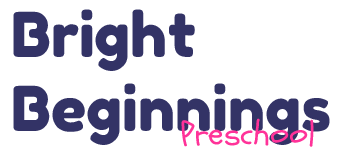Documentation
Documentation
The power of documentation. Transcriptions of children’s remarks and discussions, photographs of their activity, and representations of their thinking and learning are carefully studied. These documents have several functions. Most importantly, they help to determine the direction in which the work and experiences with the children will go. Once these documents are organized and displayed, they help to make parents aware of their children’s experience and maintain their involvement. They make it possible for teachers to understand the children better and to evaluate the teachers’ own work, thus promoting their professional growth; they make children aware that their effort is valued; and furthermore, they cre- ate an archive that traces the history of the school. Lella Gandini
Documentation is a HUGE part of what we do. Typical Reggio inspired school have documentation hanging all over the walls of the children’s space. In our setting , I like to keep the children’s art work as the main focus and I also like the calm feeling of empty space. I chose to document the children’s learning in our work sampling system, in a portable portfolio and in our group. Ms Holly is actually out today and tomorrow in a work sampling training. Work sampling is the system we use at ABC sites . It collects data and the power that be can take that data to see as a state how well we our preschoolers are progressing hitting developmental milestones. As a teacher, I use the data to determine what my ” next step ” is with each child. Three times a year we take a close look at our documentation and assess where each child is. They aren’t given a grade. We just note on each developmental indicator whether the child is ” not yet ” or ” In Process ” or ” Proficient .” Every child develops at their own pace so this is very important information. They also have an APP. It’s actually the easiest way to take notes and documentation on what children are learning. The tool is at the tip of our fingers. ( So, please .. remember if you see us with our phones many times it is work related. Not always.. but most times! )
I will give you some examples of documentation that I took today. 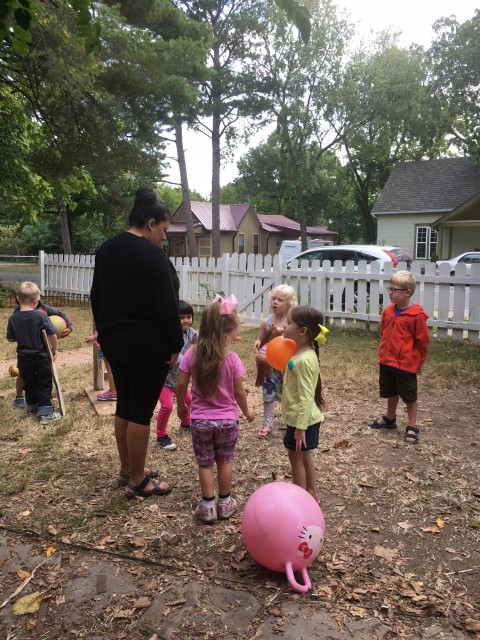
For this picture I could document that 5 children :
Interact with Familiar adults ( Anisa’s Mom )
Shows interest and curiosity as a learner ( learning to play a game she introduced. )
Participants in the group life of the class. ( joined others to play )

Uses simple tools and senses to explore nature ( They used magnifiers to look at acorns .)
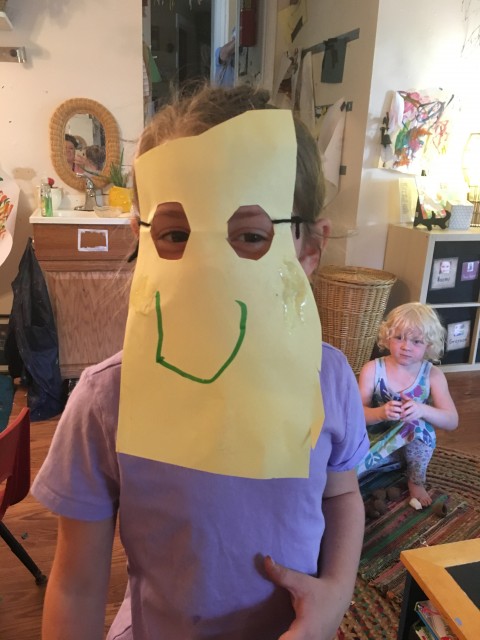
Khloe made a mask. She had problems trying to figure out how to get the strings to stay attached. You can see she tried to add glue. Eventually after trying several things she sought help.
- Shows beginning control of writing , drawing and art tools.
- Uses emerging strength and control to complete certain tasks.
- Uses eye- hand coordination to complete task.
- Uses a variety of materials for tactile experience and exploration.
- Attends to tasks and seeks help when encountering a problem .
- Demonstrates self confidence .
- Has Self Direction
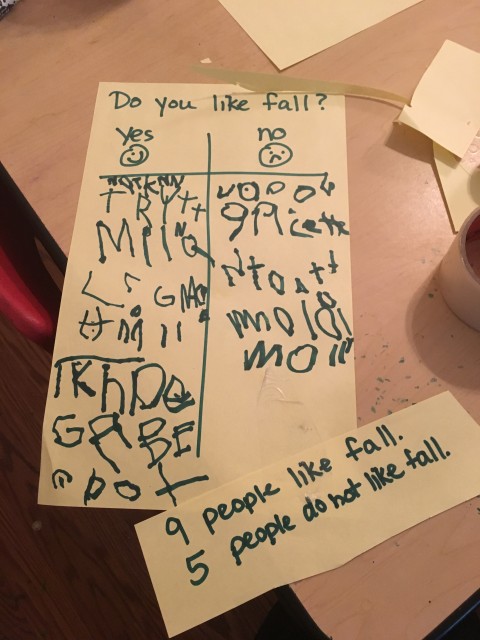
Activities like this are called group checklists. I can look to see who might need more opportunities to practice writing or other fine motor activities. Tomorrow we will look at the math opportunities on this page.
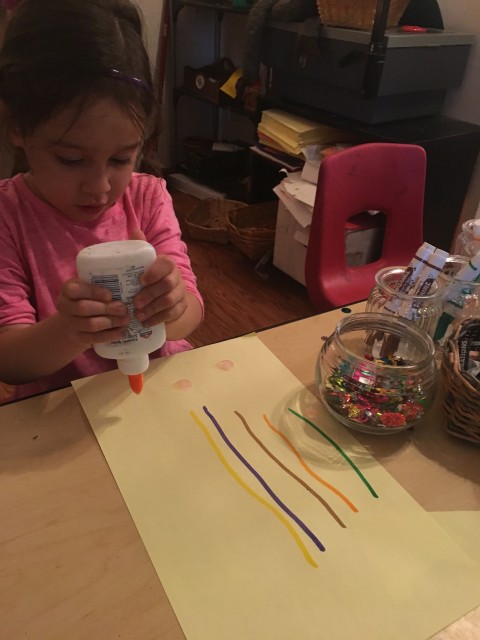
You get the idea how we check certain indicators . Many times a picture is worth a thousand words. The pictures may not mean anything to anyone else but as a teacher we know why we take them. Sometimes they are just for the sake of cuteness but most times its documentation. Malea is super cute here but as she did this art piece I was sitting next to her. She said ” Drop, Drop, Drop. ” Remember when school started we taught the littles how to use glue but saying ” rain drops not puddles ?” Malea is following classroom rules and guidelines. ( That’s an indicator. )
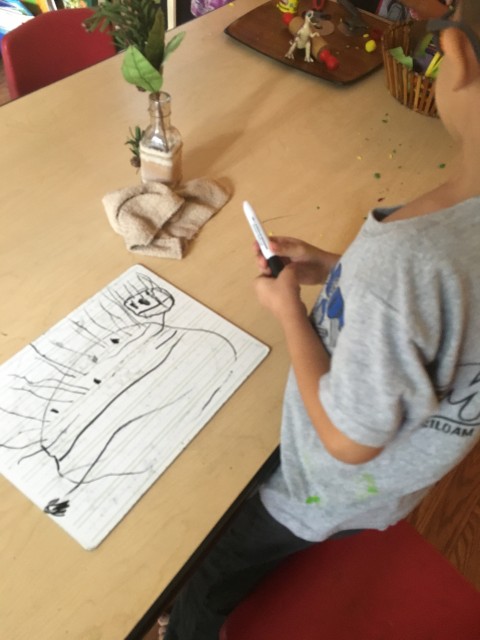
And here is Alan . Sometimes we can look at art pieces to see a progression . This was Alans art today . I have art pieces like this from Alan saved from last year. He has added more detail as time has went on.
Sometimes there isn’t art or pictures to be taken . Sometimes it is video . Sometimes it is quotes .
Here are a few from today .
I was telling the children that when I was little I loved to eat great white northern beans with ketchup on them. Naomi said ” YOU used to be a baby ?”
Child 1. ” He knocked my blocks over and I did not like it .”
” Ms Debbie, how many carrots do we get ? ( Child I don’t like carrots .) It doesn’t matter if you like it. you need to put them on your plate. Its the rule. ”
” I went to the potty and washed my hands . What do I do next ? ”
Other times it is just notes of things that happened.
14 children walked in from outside and took their shoes off and washed their hands.
Anisa’s mom played today and when she left Anisa said goodbye with no tears.
And you thought we just played all day. 🙂
